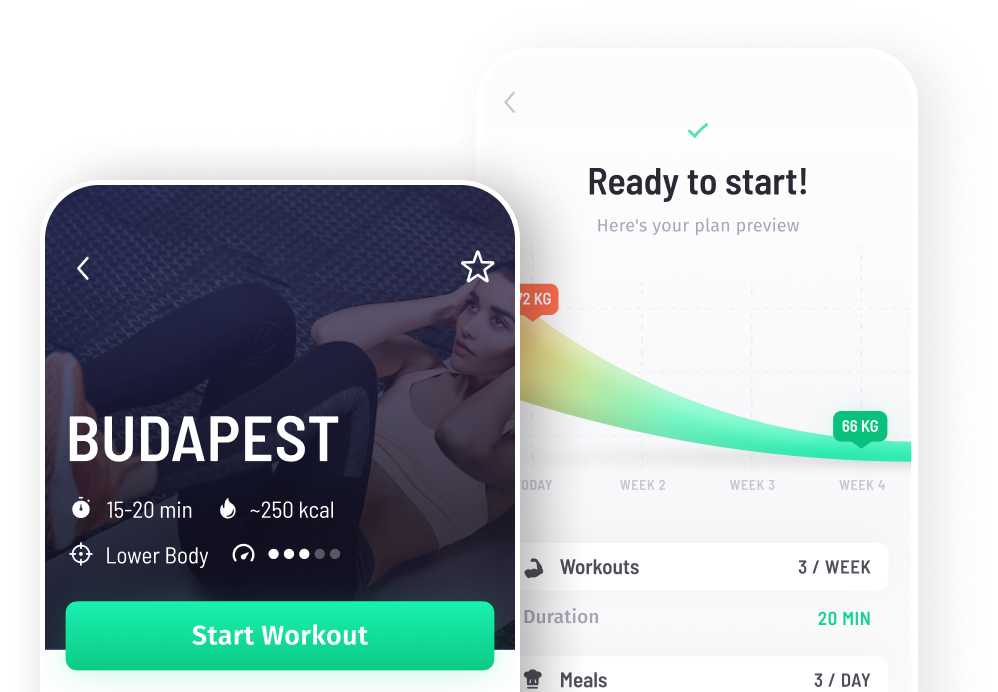If you are not a very active person, a 2500 calorie diet may seem like too much. Perhaps you are already picturing a big pile of burgers and fries. However, it is entirely possible to have a healthy 2500 calorie diet and achieve your weight and fitness goals.
In this post, we discuss who could benefit from a 2500 calorie diet, whether you can build muscles with it, and how a 2500 calorie meal plan looks like.
Who Should Have a 2500 Calorie Meal Plan?
Well, it mostly depends on your level of activity. Yet calories demands may still differ significantly even in individuals with the same schedule because other underlying factors – like age, sex, weight, and hormones – are always in play.
So, to answer the question, anyone could use a 2500 calorie diet depending on their goals. The general rule of thumb is to observe your weight and energy levels. If you find that you are feeling less energetic throughout the day, you need a little extra.
Also, if you find that you are gaining or losing weight when you shouldn’t, you have to adjust either your calorie intake or nutrient ratios.
Can You Build Muscle on 2500 Calories?
Yes, it is possible in several ways. First, if you have been taking less than 2500 calories and are beginning to work out for muscle gains, you may want to crank up your calorie intake to 2500 or more.
Also, a bodybuilder may go for 2500 calories to lose some body fat but also end up adding muscles without impacting the already achieved muscle mass. This is what’s known as a “cutting diet”.
Note: if you are not sure whether 2500 calories a day is enough to build muscles, consider trying it for 14 days while monitoring your weight to see the weekly gains.
What Does a 2500 Calorie Diet Look Like?
Now, depending on your goals, you’ll need to strike a balance between your carbs, proteins, and fats while still achieving your desired 2500 calorie intake.
For instance, when trying to build muscles, you may go for approximately 20% carbs, 50% protein, and 30% fat during non-training days and 40% carbs, 30% protein, 30% fat during training days.
Notice the proteins are highest during non-training days because that’s when your muscles are repairing and bulking up in response to the challenges experienced. On the contrary, the carbs are highest during training days because that’s when you need the energy to sustain productive workout sessions that will trigger muscle gains.
Sample 2500 Calorie meal Plan (40% carbs, 40% proteins, 20% fats)
Breakfast (carbs=75g, protein=40g, fat=15g, calories=595)
- 1 cup oats
- 1 cup egg whites
- 2 whole eggs
- 2 tbsp pure maple syrup
- 1 cup blueberries
Snack (carbs=35g, protein=50g, fats=4g, calories=376)
- 1 apple
- 2 scoops of protein shake
Lunch (carbs=45g, protein=45g, fat=6.5g, calories=419)
- 1 cup brown rice
- 1 cup chopped broccoli (steamed)
- 6 oz. chicken breast
Snack (carbs=64g, protein=46g, fats=4g, calories=476)
- 1 orange
- 1 scoop protein shake
- 1 bag chips
Dinner (cabs=46g, proteins=60g, fats=28g, calorie=676)
- 6 oz. steak
- 15 asparagus spears (chopped)
- 1 pat butter
- 1 cup sliced carrots
- 1 sweet potato (medium-sized)
- 1 tbsp extra-virgin olive oil
Final Word
A 2500 calorie diet can be used by anybody depending on their weight and fitness goals. The key is to understand the underlying body mechanisms, observe your progress, and make nutrition adjustments where necessary.
Did you enjoy this article? Share it!
Related Articles
It is super easy to hit 1500 calories a day when it comes to some foods...resulting in empty calories that are not going to help your body function.
This piece looks at what a 1200 calorie low carb diet is and how a typical weekly meal plan looks like. Stay tuned to learn more.
This 1700 calorie diet will allow you to lose weight in a sustainable and healthy way, without losing muscle mass.

